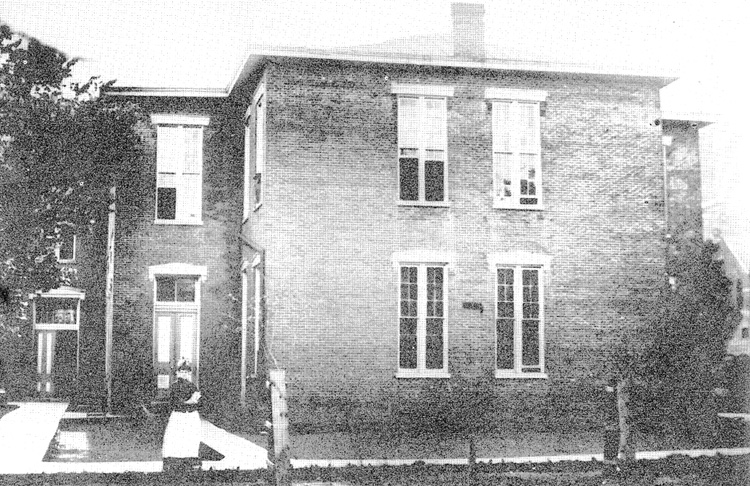By
Bob Hibbs
Iowa
City pioneers envisioned good local public schools, but faced long odds
getting them underway, with trial and effort forging the way toward what today
is arguably one of the best public education systems on Earth.
The
first local schools weren’t public, but private, and failed. Without access
to tax dollars, and without facilities, odds were stacked against their
success. Most met in church basements or other meeting halls. Some were church
affiliated; others private ventures by a self-proclaimed teachers. There were
no standards.
The
first local public schools were set up by a newly-established City Council in
1853, the first year city government existed. Those mutated in 1858 into a
system headed by an independent school board with limited taxing authority as
exists to this day.
The
original Iowa City public school was opened in 1853 in rented quarters, the 2½-story
Mechanics Academy building where the local Masonic Lodge met on the top floor.
The lodge was founded in 1842 by among others, William Reynolds, who taught in
his own early local private school and later served as state superintendent of
public instruction.
The
academy, it’s lower floors rented for $250 a year, was located on the east
side of Linn Street a half-block north of Iowa Avenue, a section of street now
closed and part of the University of Iowa campus.
UI
was founded in the same structure two years later, but was closed in 1858 for
lack of funds. Both Mercy and University hospitals also were founded in the
same building, as were other important institutions, including the first Iowa
teachers’ college which evolved into today’s University of Northern Iowa.
Iowa
City’s first school bond issue for $20,000 to build facilities was approved
115 to 46, a 71% approval, in September 1855. Only men could vote in this
period long before American women received the right to vote in 1920 with
ratification of the 19th amendment to the U.S. Constitution.
The
council created three wards of about equal size in 1856, and authorized $8,000
to erect a building in each ward. When completed in spring 1858, the final
cost was $8,125 each.
A
newly-elected school board took over May 6, 1858 at the height of a national
financial panic which affected America much as the Great Depression did during
the 1930s. Despite hard times, several thousand dollars more were spent on
finishing work in the wooden-framed brick-veneer structures which would serve
during the subsequent half century.
Thus,
in 1858 the community finally had its public school system complete with
facilities, then nearly 20 years after its founding in 1839 on the dream of
pioneer homesteaders.
The
three first-generation schools were First Ward located on the site now serving
the Sabin building on South Dubuque Street, Second Ward on what is now a UI
parking lot along the west side of Gilbert Street north of Iowa Avenue, and
Third Ward on what is now Market Park adjacent to Mann Elementary.
A
Fourth Ward building later was erected on the southwest quadrant of the
Dodge-Court intersection which later was enlarged with Kirkwood School at
Dodge and Kirkwood for part of its pupils. The Fifth Ward sent students to
Fourth Ward School until Longfellow was built in 1917-18 simultaneously with
Sabin and Mann.
The
first teachers were Henry Lathrop, paid $450 a year as principal and succeeded
a year later by Samuel Spurrier at $400 annually with 46 students, Miss
Christy at $200 with 34 pupils, Miss Cornelia Wilson at $155 with 32 and Miss
Lydia Lanning at $150 and 43. Average class size was 39.
Men
were paid more money then, as now, but the disparity has decreased, as has
class size.
Bob
Hibbs collects local postcards and researches history related to them.
Copyright 2003
By Bob Hibbs
